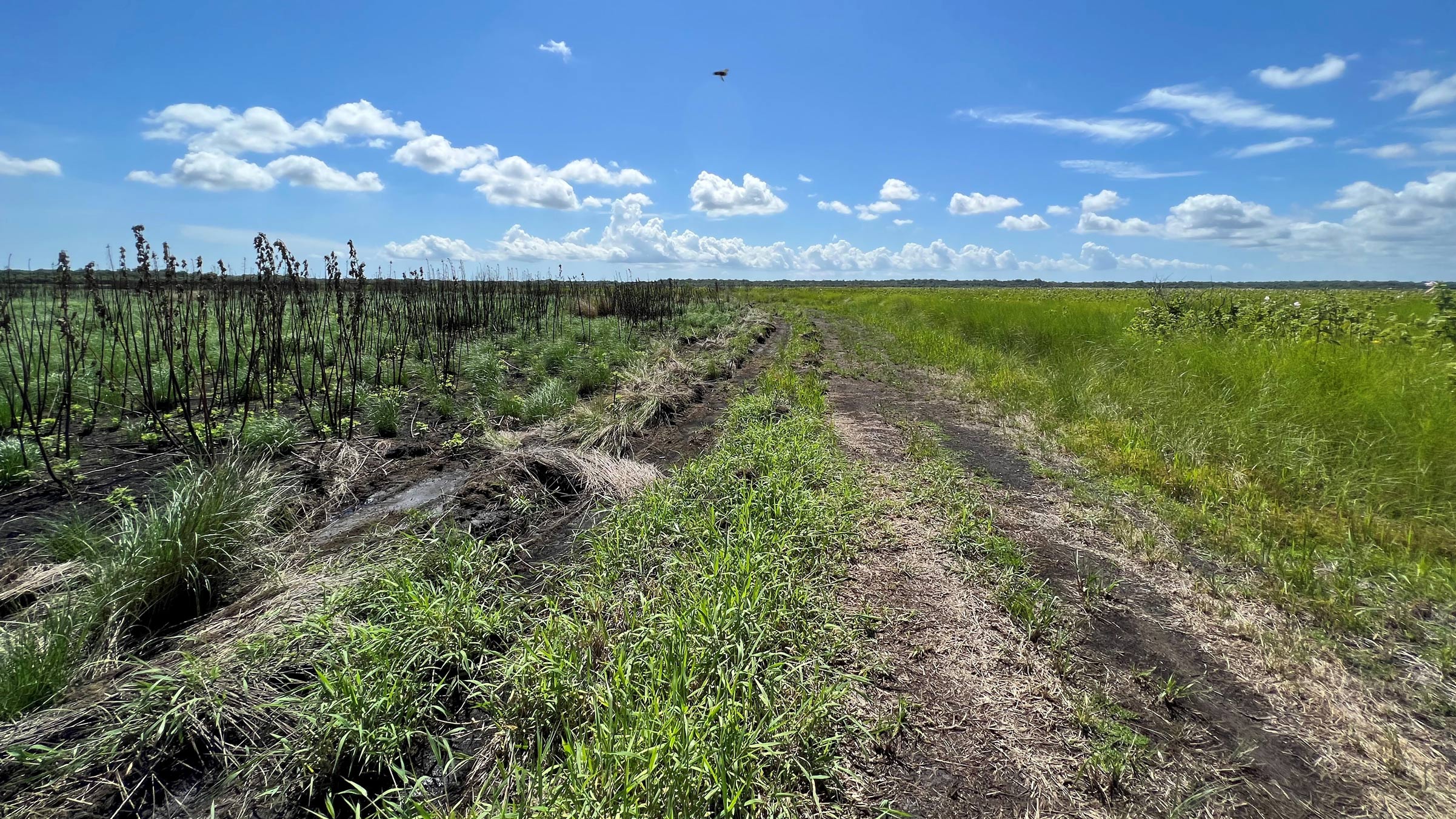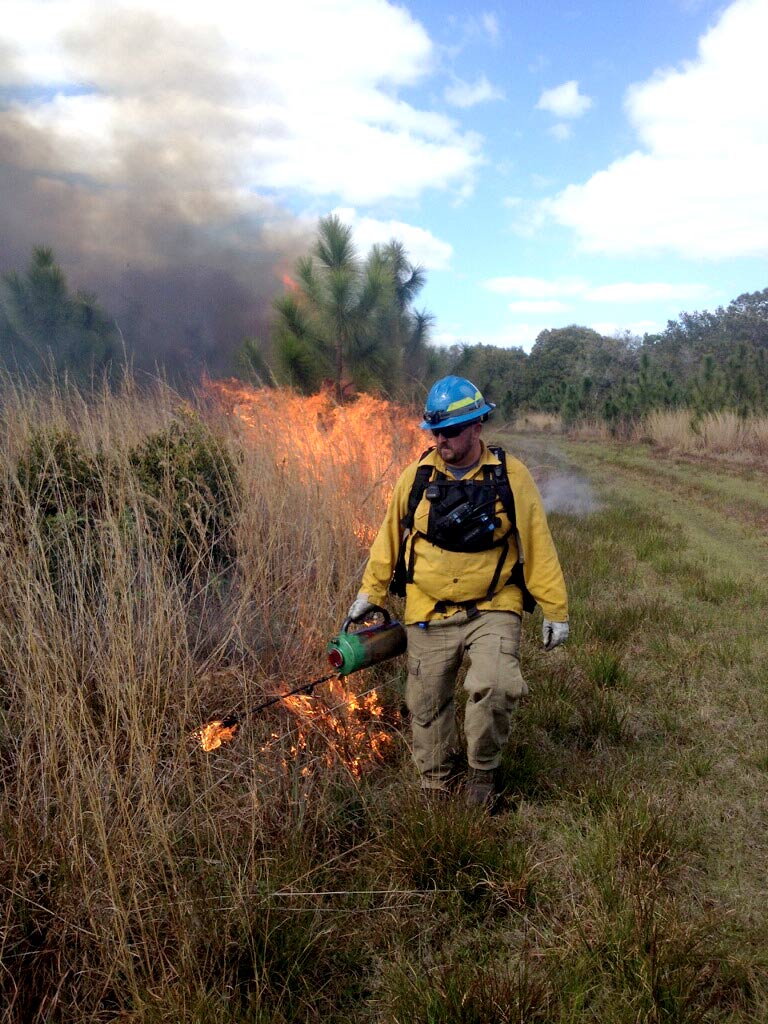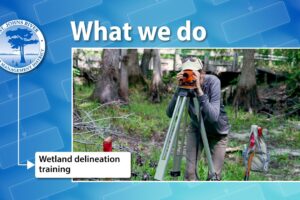Graham Williams starts fires. It’s part of his job as a land manager with the St. Johns River Water Management District. He’s not alone: nature is a bit of a firebug, at least in Florida, a state with a thunderstorm 70–100 days out of the year.
The plants and animals that live in Florida rely on the frequent fires that, for millennia, were ignited by lightning. But now, more people than ever are calling Florida their home and wildfires can create a hazard to human safety, so Williams and other land managers throughout the state use prescribed fire to maintain a healthy ecosystem.
“Lightning strikes still ignite wildfires, but planned, prescribed burns reduce the available fuel loads (dry vegetation that builds up on the ground) so that when they do, the intensity is lessened,” says Brian Emanuel, Land Resources Bureau Chief with the District. “This, in turn, protects neighboring homes and property.”
Such was the case in mid-June when lightning started a wildfire north of Loughman Lake, a marsh just south of State Road 46 in Brevard County. As is often the pattern in Florida, an afternoon thunderstorm rolled in. And while rain may have fallen elsewhere, the marsh remained dry, and a quick lightning strike kindled a wildfire. “The area is part of the St. Johns River’s expansive floodplain, and it’s hard to access. Fire can spread quickly in the seasonally dry tall marsh grass, so it grew to be a good-sized wildfire,” says Williams. Once the fire spread to District land at Seminole Ranch Conservation Area, the Florida Forest Service (who had been battling the blaze) reached out to the District for assistance.
Williams and his team joined the multi-agency response effort, but it turned out that the work Williams and his team performed three months prior helped stop the fire from spreading.
In March, as part of the District’s land management plan, Williams partnered with the Florida Forest Service and an adjacent landowner north of the District’s Seminole Ranch Conservation Area to burn 143 acres of the marsh. So, in June, as the lightning-triggered wildfire headed east, it reached the area that was treated with the prescribed burn, and it ran out of fuel, and sizzled out.
Lightning strikes still ignite wildfires, but planned, prescribed burns reduce the available fuel loads (dry vegetation that builds up on the ground) so that when they do, the intensity is lessened. This, in turn, protects neighboring homes and property.
“By the time it got there it had already grown to 355 acres. It would have surely grown larger had it not run into the recent prescribed burn,” says Williams.
Despite being wet much of the year, the marsh ecosystems of Florida depend on regular wildfires. “It takes about three years before there’s enough fuel and dead thatch built up,” says Williams. “Then the fire can find enough fuel to carry across the marsh.”
Animals that live in the marsh also depend on frequent fires. Take, for example, the Eastern black rail, a tiny marsh bird that the U.S. Fish and Wildlife Service recently listed as a threatened species. “It needs vast expanses of marsh. The best way to maintain that is by frequent fires,” says Williams. “Fire knocks back all the woody shrubs, clears out thatch, and creates openings and paths for secretive marsh birds like the black rail, as well as for ground dwelling species such as marsh rabbits and marsh wrens.”
After a fire, prescribed or not, the grasses grow back quickly, lush and bright green. Regrowth was already abundant when Williams and his team traveled into the field a few weeks after the wildfire to check the burn site. “It was amazing. You could see where the wildfire just stopped, right where it ran into lush green grass in the area where we did the prescribed burn. You hear stories about this, where a prescribed fire helped stifle a wildfire, but this is the first time I’ve seen it happen so clearly. It really drives home the importance of prescribed burning.”
The population of Florida is growing, bringing development closer to natural areas. Climate change increases the risk of drought periods, and wildfire. Prescribed fires are going to be increasingly important in our resilience strategy, protecting developed areas and homes from wildfires while preserving Florida’s ecosystems.
To learn more about the District’s prescribed fire program, visit the District online at www.sjrwmd.com/lands/management/prescribedfire or follow the conversation on social media at #RXburn #goodfire #sjrwmd







